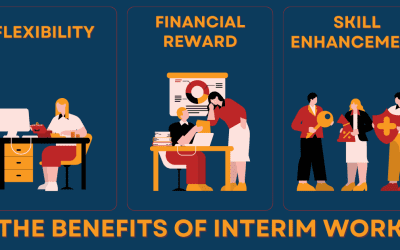5 Practical steps to promoting a more inclusive workplace
‘Diversity’ and ‘inclusion’ are large & complex subjects. The good news is that these two words are definitely being used more and more by large and small companies. But whilst the words are now used in most job descriptions or careers pages of websites, what actions can a business actually take to improve their own diversity & inclusion?
As you may have seen, iMultiply has been on a journey to make ourselves a more diverse and inclusive workplace in recent years. We have worked through our LGBT Youth Scotland charter, of which we are now silver charter holders, and we have been developing relationships with third-party organisations such as Black Professionals Scotland.
The journey has not always been easy. And when we went looking for resources and guides to help us develop our own action plan, it was hard to find the right resources. So having taken our own small steps in the right direction, we thought we’d share some of our story – and hopefully provide you with a bit of an action list. So here are our five practical steps businesses can take to promote a more inclusive workplace.
1. Really understand what inclusivity actually means.
While there is a legal definition of ‘equality,’ no legal definitions apply to ‘diversity’ and ‘inclusion’. So firstly, you need to define what you understand to mean as ‘diversity’ and ‘inclusion’ to address it. You might start by thinking about anti-discrimination laws and who they are designed to protect…but that’s not enough. You need to also think more widely about historically disadvantaged groups.
For iMultiply, we, of course, follow but also usually exceed employment law as an organisation with a high track record of value-driven employment. We were already gender-balanced and wanted to extend our focus onto a group that may have some legal protection but is still often subject to ‘internal exclusion’. We, therefore, defined ‘diversity and inclusion beyond the legal definition of ‘equality and sought to outwardly address groups of people that we had not previously addressed in our employment practices and, in some cases, maybe classified as ‘invisible’.
2. Create an internal D&I committee, and set clear objectives
By building a committee of key stakeholders, you then have a task force focused on Diversity and Inclusion. This Committee can then take your previous definition of diversity and inclusion as their starting point, and from there, set their goals and determine which underrepresented groups to focus on in your overall D&I strategy.
We set up a Diversity & Inclusion Committee, and their purpose is to develop and implement a D&I strategy to ensure the business is fully and visibly supportive of people from every background and is a welcoming place for anyone seeking advice and assistance in their job search. The Committee has its own objectives and goals, which they discuss quarterly. Our Committee’s first goal was to complete our Silver LGBT charter; from there, we would look to another underrepresented group, of which we have since developed a relationship with Black Professionals Scotland.
3. Eliminate unconscious bias
Incorporating D&I training sessions with employees is essential to educating them on terminology and unlocking unconscious bias.
We have strong policies and procedures to address bullying in the workplace; however, we wanted to go further. So we put all of our employees through training on recognising bias and unconscious bias and training on what constitutes harassment.
Therefore, we also wanted to create awareness and started displaying LGBT Youth Scotland posters in all offices, reception areas, and meeting rooms. We have also encouraged our team to put their pronouns onto LinkedIn and their email signatures. This meant that whenever we have someone new joining the team or a member of the accountancy and finance community visiting us for an interview, they know that they can be completely authentic. As well as feel safe without feeling who they are speaking to may discriminate against them.
4. Go beyond sensitivity training.
Policies are essential but not as important as what is put into practice. Inclusion must be embedded into the culture and be consistently demonstrated from the top. We have continued to develop an ‘authentic leadership’ philosophy, which focuses on listening, building trust and being transparent and fair. This encouraged authentic, reciprocal actions both internally and with external stakeholders.
Our objective is not to ‘tick a box. It is to instil a way of working; in many cases, this cannot be quantitatively measured without breaching privacy. However, we’ve received exceptionally positive qualitative feedback on our approach by many organisations such as ACCA, Tech Advocates Scotland, The University of Edinburgh, and Women on Boards.
5. Expand your network
Since we have gained our LGBT+ charter, we now have influenced many employers to consider their own diversity practices. As a result, we have seen a 20% increase in the number of candidates who have approached iMultiply for work. As well as a 150% increase in the number who have shared at interviews that they are from the LGBT+ community.
We have also been developing a relationship with Black professionals Scotland and are looking to appoint an external advisor to positively impact our strategy and bring new perspectives and fresh ideas.
At iMultiply, we value sharing experiences and learning from others. If you would like to hear more about our commitment to Diversity and Inclusion or how your business can benefit from a similar strategy, please get in touch with our D&I Chair, Alex Allen, on 07719 108 230 or by emailing alexallen@imultiplyresourcing.com.
finding this interesting?
Why not share it with friends?
It's good to talk
Get in Touch





